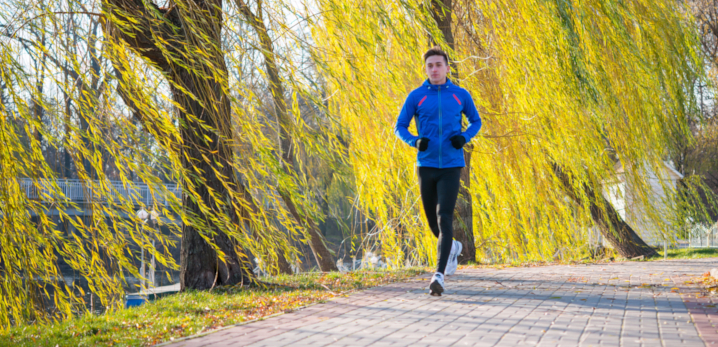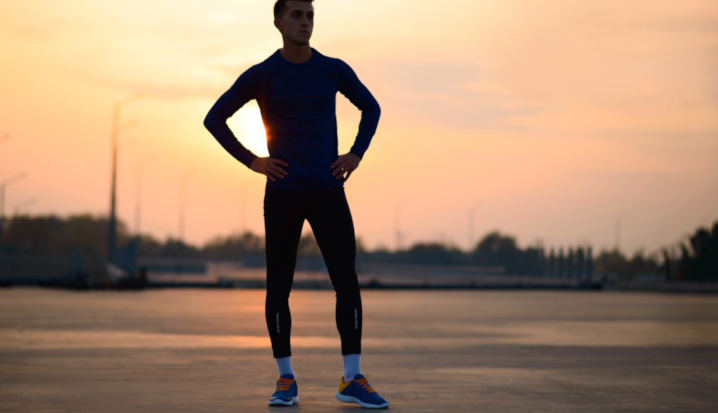Heel drop, also known as running shoe differential, refers to the height difference (in millimeters) between the heel and the forefoot of a running shoe. For example, a shoe with a 31 mm heel and a 21 mm forefoot has a heel drop of 10 mm. Understanding this concept is crucial for runners of all levels.
While heel-to-toe drop plays a role in running mechanics, it’s not a critical factor for beginners. If you’re new to running, prioritizing overall comfort and a shoe that supports your natural gait is more important than focusing on drop measurements.

However, heel drop becomes increasingly important for runners dealing with existing injuries, joint pain, or biomechanical issues. The right drop can reduce strain on specific areas such as the Achilles tendon, knees, or calves, depending on your needs.
It also matters when switching between different shoe models or transitioning to a new running style, as an abrupt change in drop can affect your stride and muscle engagement. In this Heel Drop Explained blog post, we’ll break down the various drop levels, discuss how they influence running performance, and outline the key advantages and disadvantages of each type.
Running is a high-impact activity that can burn up to 1,000 calories per hour and delivers significant cardiovascular and longevity-related health benefits. But to run safely and effectively, proper preparation and gear selection are essential, and understanding heel drop is one step toward making smarter choices in your running journey.
Table of Contents
- Zero Heel Drop Explained
- Low Heel Drop Explained
- Mid Heel to Toe Drop Explained
- High Heel to Toe Drop Explained

Zero Heel Drop Explained
Zero-drop running shoes have no height differential between the heel and the forefoot, meaning the heel drop is 0 mm. Despite this, their stack height (the amount of cushioning underfoot) can vary widely, from minimalist designs with very little padding to highly cushioned maximalist models.
These shoes are best suited for midfoot or forefoot strikers, as they promote a more natural gait cycle by encouraging a flatter foot landing. However, transitioning to zero-drop shoes requires careful adaptation, especially if you’re accustomed to traditional high-drop footwear. Sudden changes can strain the Achilles tendon, calves, ankles, and feet, so it’s recommended to gradually increase mileage and allow your lower limbs to adapt over time.
Zero-drop shoes can enhance proprioception, encourage natural foot mechanics, and strengthen lower limb muscles, especially in the calves and foot arch. However, they demand greater ankle mobility and calf flexibility, and may not be suitable for runners recovering from injuries in those regions.
While zero-drop models can improve running efficiency and form, especially at faster paces, they aren’t ideal for everyone. Notably, many brands have shifted toward low-drop designs (typically 2–4 mm), making true zero-drop running shoes increasingly rare.

Low Heel Drop Explained
Low-drop running shoes typically feature a heel-to-toe drop of 2–4 mm, offering a subtle elevation in the heel compared to zero-drop shoes. Like other drop types, they come in a wide range of stack heights, from minimalist profiles to highly cushioned, maximalist options.
Low-drop shoes serve as a great transitional option if zero-drop feels too demanding on the Achilles tendon and calves. They still encourage a natural running gait—particularly suited for midfoot and forefoot strikers—while offering slightly more heel support to reduce strain during the landing phase.
These shoes often strike a balance between promoting efficient biomechanics and easing joint stress. They may be gentler on the knees and hips than higher-drop models, yet they still place moderate demands on the feet, ankles, Achilles, and calf muscles. As such, adequate lower limb strength and mobility are important for injury prevention.
Low-drop running shoes can also enhance running economy and cadence, making them a solid choice for tempo runs or runners looking to improve form. However, if you’re recovering from an injury involving the foot, ankle, or lower leg, it’s best to transition gradually or consult with a medical or gait specialist before switching to a lower drop.

Mid Heel to Toe Drop Explained
Mid-drop running shoes, typically featuring a 5–8 mm heel-to-toe drop, offer a well-balanced option for a wide range of runners, especially heel strikers. The increased heel elevation compared to low- or zero-drop shoes provides additional cushioning under the heel, often resulting in greater stack height and improved shock absorption during initial ground contact.
Modern mid-drop shoes often incorporate advanced foam midsoles (such as EVA blends or nitrogen-infused compounds) that are engineered to dampen impact forces at heel strike, making them ideal for runners who require more cushioning without sacrificing responsiveness.
This drop range can reduce the strain on the Achilles tendon, calves, and ankles while still being gentle enough on the knees and hips, offering a more balanced load distribution across the lower kinetic chain. Runners looking to minimize musculoskeletal stress—especially those with a history of Achilles or calf tightness—may benefit from a mid-drop configuration.
For optimal heel-strike support, an 8 mm drop is often preferred within this category, as it maximizes rearfoot cushioning without feeling overly elevated. Mid-drop shoes are a versatile choice for daily training, long-distance runs, and for runners transitioning between different drop levels.

High Heel to Toe Drop Explained
High-drop running shoes, typically defined by a heel-to-toe drop of 9–14 mm, offer the most pronounced elevation between the heel and forefoot. This category is the most common among mainstream running shoes, reflecting its broad compatibility with a wide range of running styles, particularly for heel strikers and recreational runners.
The elevated heel in high-drop shoes helps to offload stress from the foot, ankle, Achilles tendon, and calves, making them a strong option for runners recovering from or prone to injuries in those areas. If you experience discomfort or tightness in the lower posterior chain, such as Achilles tendinopathy or calf strain, a high-drop shoe may provide the relief and support needed to maintain your training routine.
However, this increased heel elevation can shift biomechanical loading upward, potentially placing more stress on the knees and hips. As a result, runners with existing issues in those joints—such as patellofemoral pain syndrome or hip impingement—may want to approach high-drop shoes with caution.
While high-drop models are widely available and often well-cushioned, choosing the right shoe ultimately depends on your individual gait mechanics, injury history, and comfort preferences.
Heel Drop Explained FAQs
What is heel drop in running shoes?
Heel drop, also known as heel-to-toe drop, refers to the difference in height between the heel and the forefoot of a running shoe. It is measured in millimeters and affects the shoe’s cushioning and stability.
How does heel drop impact running performance?
Heel drop influences running mechanics, including stride length and foot strike pattern. A higher heel drop can promote a heel strike, while a lower drop encourages a midfoot or forefoot strike, potentially affecting speed and injury risk.
What are the common heel drop measurements in running shoes?
Typical heel drop measurements range from 0 mm (zero drop) to 12 mm or more. Shoes with a drop of 0-4 mm are often classified as minimalist, while those with a drop of 8-12 mm provide more cushioning and support.
Should beginners focus on heel drop when choosing running shoes?
Yes, beginners should consider heel drop as it can affect comfort and performance. It’s advisable to select a drop that complements their running style and foot strike to minimize injury risk and enhance their running experience.
Can heel drop affect injury risk in runners?
Yes, heel drop can influence injury risk. A mismatch between a runner’s natural biomechanics and shoe drop may lead to overuse injuries. It’s important for runners to choose a drop that aligns with their running form and experience level.
Conclusion: Heel Drop Explained
If you’re new to running, heel-to-toe drop doesn’t need to be your primary concern. At this stage, it’s more important to prioritize overall comfort, fit, and support to establish a consistent and injury-free running routine. Choose shoes that align with your natural gait and foot shape, and focus on gradually building mileage while progressing through the phases of running adaptation.
However, heel drop becomes more relevant when you’re transitioning to a different footwear type, testing a new shoe model, or addressing running-related discomfort or injuries. In these cases, selecting the appropriate drop can help optimize biomechanical alignment, reduce excessive loading on vulnerable joints or tendons, and improve running efficiency. Understanding your individual needs will guide you toward the most suitable heel drop for your stride, injury profile, and performance goals.
You may also like:
